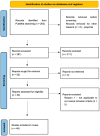The Gut-Brain Axis in Opioid Use Disorder: Exploring the Bidirectional Influence of Opioids and the Gut Microbiome-A Comprehensive Review
- PMID: 39459527
- PMCID: PMC11508959
- DOI: 10.3390/life14101227
The Gut-Brain Axis in Opioid Use Disorder: Exploring the Bidirectional Influence of Opioids and the Gut Microbiome-A Comprehensive Review
Abstract
Opioid Use Disorder is a chronic condition characterized by compulsive opioid use despite negative consequences, resulting in severe health risks such as overdose and contraction of infectious diseases. High dropout rates in opioid agonist therapy highlight the need for more effective relapse prevention strategies. Animal and clinical studies indicate that opioids influence gut microbiota, which in turn plays a critical role in addiction development and alters behavioral responses to opioids. This study provides a comprehensive review of the literature on the effects of opioids on the gut microbiome and explores the potential of microbiome manipulation as a therapeutic target in opioid addiction.
Keywords: addiction; gut-brain axis; microbiome; microbiota; opioid use disorder; opioids.
Conflict of interest statement
The authors declare no conflicts of interest.
Figures







Similar articles
-
The role of the gut microbiome in opioid use.Behav Pharmacol. 2020 Apr;31(2&3):113-121. doi: 10.1097/FBP.0000000000000538. Behav Pharmacol. 2020. PMID: 31895059 Free PMC article. Review.
-
The bidirectional relationship between opioids and the gut microbiome: Implications for opioid tolerance and clinical interventions.Int Immunopharmacol. 2023 Dec;125(Pt A):111142. doi: 10.1016/j.intimp.2023.111142. Epub 2023 Oct 31. Int Immunopharmacol. 2023. PMID: 37918085 Review.
-
Understanding the impact of the gut microbiome on opioid use disorder: Pathways, mechanisms, and treatment insights.Microb Biotechnol. 2024 Oct;17(10):e70030. doi: 10.1111/1751-7915.70030. Microb Biotechnol. 2024. PMID: 39388360 Free PMC article. Review.
-
Opioid Use, Gut Dysbiosis, Inflammation, and the Nervous System.J Neuroimmune Pharmacol. 2022 Jun;17(1-2):76-93. doi: 10.1007/s11481-021-10046-z. Epub 2022 Jan 7. J Neuroimmune Pharmacol. 2022. PMID: 34993905 Free PMC article. Review.
-
The interplay between the microbiota and opioid in the treatment of neuropathic pain.Front Microbiol. 2024 Jun 10;15:1390046. doi: 10.3389/fmicb.2024.1390046. eCollection 2024. Front Microbiol. 2024. PMID: 38919504 Free PMC article. Review.
Cited by
-
The Bidirectional Interplay Between Substances of Abuse and Gut Microbiome Homeostasis.Life (Basel). 2025 May 22;15(6):834. doi: 10.3390/life15060834. Life (Basel). 2025. PMID: 40566488 Free PMC article. Review.
-
Exploring the Gut and Oral Microbiomes in Psychoactive Substance Use: A Scoping Review of Clinical Studies.J Neurochem. 2025 Jul;169(7):e70165. doi: 10.1111/jnc.70165. J Neurochem. 2025. PMID: 40709626 Free PMC article.
References
Publication types
LinkOut - more resources
Full Text Sources

